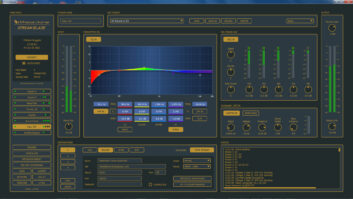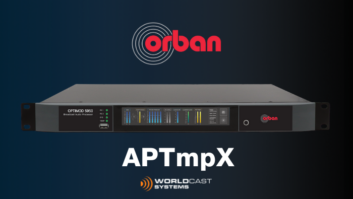Radio is a highly competitive business in which success is measured by numbers. In the largest radio markets, the Portable People Meter is how those numbers are derived.

The Voltair promises to monitor PPM coding efficiency in real time. The importance of PPM can’t be overstated. Indeed, some radio engineers joke that if a PPM encoder were to break they might as well turn the transmitter off; advertisers will never know if anyone is listening anyway. Radio stations invest in backup encoders and even specialized monitors to ensure their encoding is always working, and their engineers jump to repair it when something goes wrong.
In spite of its importance, or perhaps because of it, the PPM watermarking technology developed by Arbitron and deployed by successor Nielsen has remained something of a mystery since its introduction in 2007. In the minds of some station personnel a lingering doubt remained: Are all stations really created equal when it comes to PPM? Or are there some aspects of certain voices or formats that don’t measure as well as others?
LOCATION MATTERS
Manufacturer 25-Seven Systems is promising some answers with a PPM-related product that it will exhibit at the NAB Show. In conjunction, its parent, the Telos Alliance, will give two presentations about the effects of processing and program audio on the PPM system for ratings measurement.
On Sunday, Cornelius Gould will present “Processing Smarter, Not Harder, for Today’s Rating Wars.” This will describe the technology behind the PPM measurement system and how choice of program audio and the way it is processed can affect its operation.
On Tuesday, Dr. Barry Blesser will present “Monitoring for Ratings: Putting Yourself in Your Listeners’ Ears.” He will explore effects of ambient environments on the effectiveness of the decoding operation of the PPM monitors and how this can be measured with the new confidence monitor, called the Voltair.
Company officials say its new product was prompted by reaction to a Blesser white paper in 2009 that questioned certain aspects of PPM. According to Blesser, the system doesn’t always respond equally when presented with various kinds of program audio due to how the PPM watermark is created. Certain kinds of music or voice do not effectively mask the watermark signals, resulting in lower amounts of coding depending on format or voice talent. “The publication of that paper had the effect of bringing to light a number of people in the radio industry who had questions about the PPM system,” according to Blesser.
A Radio World news story at the time reported that he had based his work only on publicly available documents and that he encouraged Arbitron to release more technical information about PPM. Arbitron did not reply to RW’s request for comment in 2009. (At the time Blesser was also a columnist for Radio World Engineering Extra, which was not involved in this product or his research.)
CONTENT MATTERS
Geoff Steadman, president of 25-Seven, said that the company’s acquisition by the Telos Alliance allowed it resources to pursue development of a device that could answer questions about PPM encoding. He said the research led to the conclusion that, when it comes to watermarking for PPM, not all content is the same.
“We came up with audio samples that were highly resistant to watermarking when compared to others. Whether you were listening in a car on the highway or in a quiet living room could also make a big difference,” said Steadman. This led to investigation of whether there were ways to process audio that would potentially improve watermarking efficiency. “It turned out there were ways to pre-process program audio in such a way as to improve the coding efficiency seen by the Nielsen monitors.”
Initial beta tests were conducted on-air in some markets, beginning in March of last year, and the manufacturer reported positive feedback, followed by more trials; the Voltair went on sale to stations in September.
In its marketing material, the company says this new product monitors and analyzes the robustness of PPM encoding; provides visibility into how a listener’s environment may influence watermark decoding; provides audio signal processing to “enhance the detectability of the PPM watermark codes within the context of your programming objectives”; and lets programmers make more informed decisions “to address potential weaknesses in either encoding or decoding.”
Nielsen officials declined comment for this story.
Michael LeClair is chief engineer of WBUR Boston University and former technical editor of Radio World Engineering Extra.












